A Bug's Life Learning Experiences
This week we turn to our first fully animated film of our Disney+ Learning Experience series. When walking through the neighborhood last week, my daughter saw a ladybug. She asked, “Mama, are all ladybugs girls? Are there boy ladybugs?” I immediately thought of A Bug’s Life, with the comedy of the male ladybug, and thought this should be our next movie. Apparently my girls were ready for a fully animated film because, when I started it, my older one asked, “Is this all animated?” When I responded with yes, she exclaimed, “Thank goodness!” This movie is fun because it takes us into the wonderful world of insects.
Supplies needed for this week:
-rocks
-paint
-notebook/paper
-paper, pencils, markers, crayons, colored pencils
-clay/Model Magic/Play-Doh
-ingredients for sugar cookies and icing (if making the ladybug cookies)
The Hook: What Is An Insect?
Ask your children if they know what an insect is. We know them commonly as bugs. What makes a bug an insect? What are examples of insects they have seen or know of? If your children don’t know, you can tell them that insects have three body parts: a head, thorax (middle part), and abdomen (bottom part). They also have six legs. These six legs attach to the thorax. I made up this little song when I was teaching a first grade unit on insects many years ago and you can use it to teach your kids! It goes to the tune of “Head, Shoulders, Knees, and Toes”. You can make motions to go along with them.
The Insect Body Part Song
(To the tune of “Head, Shoulders, Knees, and Toes”)
“Head, Thorax, Abdomen, Abdomen
Head, Thorax, Abdomen, Abdomen
Two eyes, two ears, two antennae, six legs
Head, Thorax, Abdomen, Abdomen”
Now you are ready to watch A Bug’s Life!
Nature Observation- Go On a Bug Hunt
Go outside with a notebook. Look around for what bugs you may find. If you have a little notebook, you can tell your child that this can be a science journal. If not, fold a few pieces of paper in half, staple them together and—voila! You have a science journal. When you go on walks or play in the backyard, encourage your children to draw what they see. My children found a whole bunch of ants on a regular walk we do through our neighborhood. Now, each time we do this walk, they look for those ants and, sure enough, they are still there! They have quite a colony at the base of a tree. My older daughter likes to draw things that she things she may see and then check them off when she sees them—sort of like a nature scavenger hunt. This is also a great time to bust out the magnifying glasses, if you have them. Have your children hunt for insects in the back yard and then draw them in their habitats, when they find them.
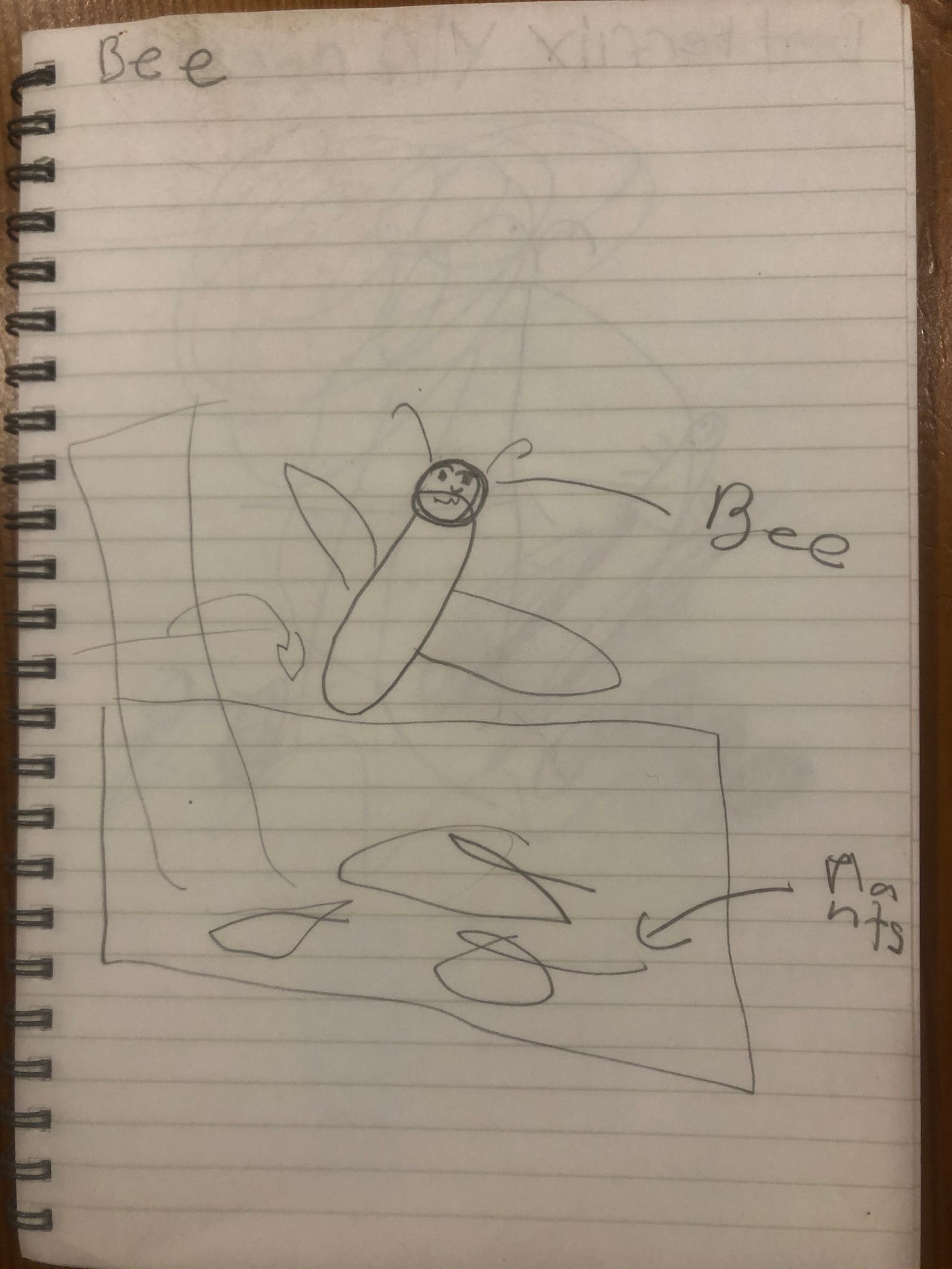
The Parts of an Insect: Making Bugs Out of Clay
Here is an opportunity for your children to put into practice their (possibly new) knowledge of the parts of an insect. Have them choose one insect and made a model of it! Make sure the insect body has three parts; a head, thorax, and abdomen. This is something that makes an insect different than an arachnid (spider or tick). Besides having 8 legs, arachnids also have only two body parts- a head and abdomen. The model should include two antennae (singular is antenna, plural is antennae) and wings if their insects (like a bee or butterfly) has wings. The legs should attach to the middle part of the body, the thorax. My daughters didn’t want to add legs to their insect models, but it was still a good talking point for us- how many legs they have and where they are located. And that even butterflies have legs! For some reason my kids were really surprised by that.
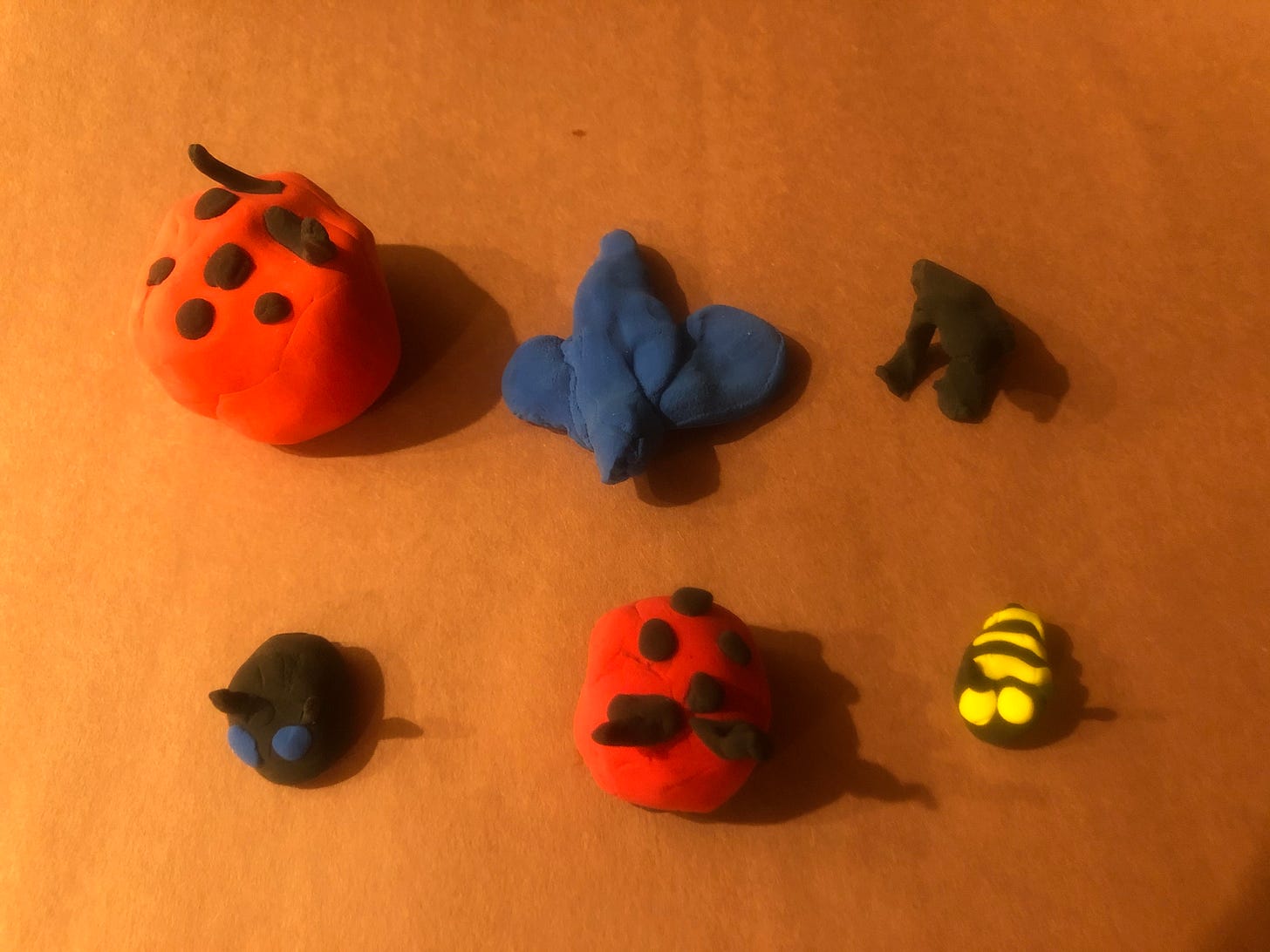
Here is a chart you can check out and print, if you need a reference.
Butterfly Symmetry Painting
Here is an activity similar to the one we did in the Flight of the Navigator Learning Experience a few weeks ago. Fold a large paper in half and draw a butterfly wing shape out from the fold.
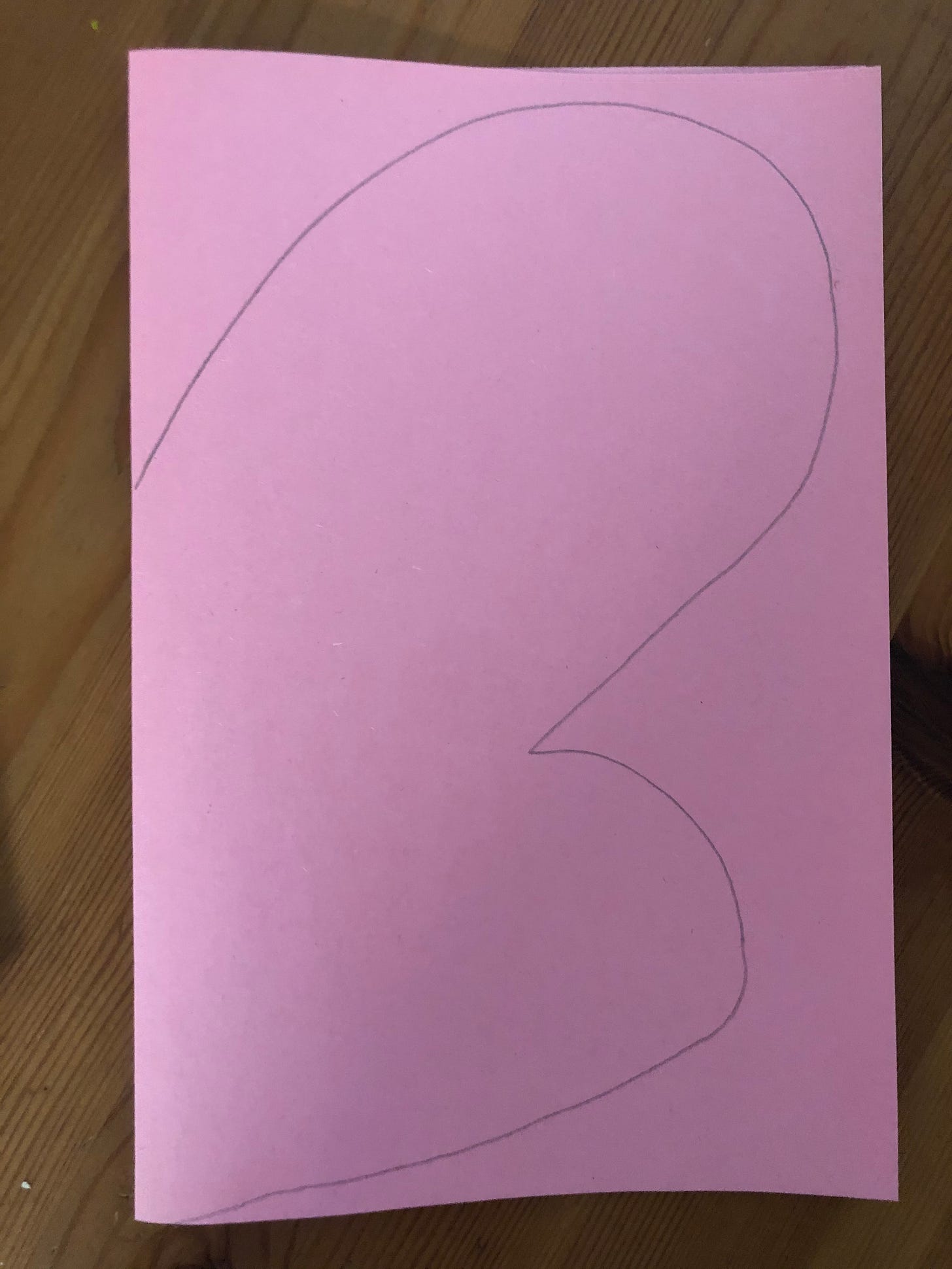
Then cut it out, making sure not to cut along the folded line. Then paint the one side of the wing, fold it over and press, and then you’ll see the image reflected on the other side. You will have to paint and fold as you go. If you wait until you’re done, it may dry before you fold.
As your child does this, talk about symmetry. Symmetry is an invisible line that runs down an object, cutting it perfectly in half. In order for something to be symmetrical, the two sides need to be exactly the same. They are mirror images of each other.
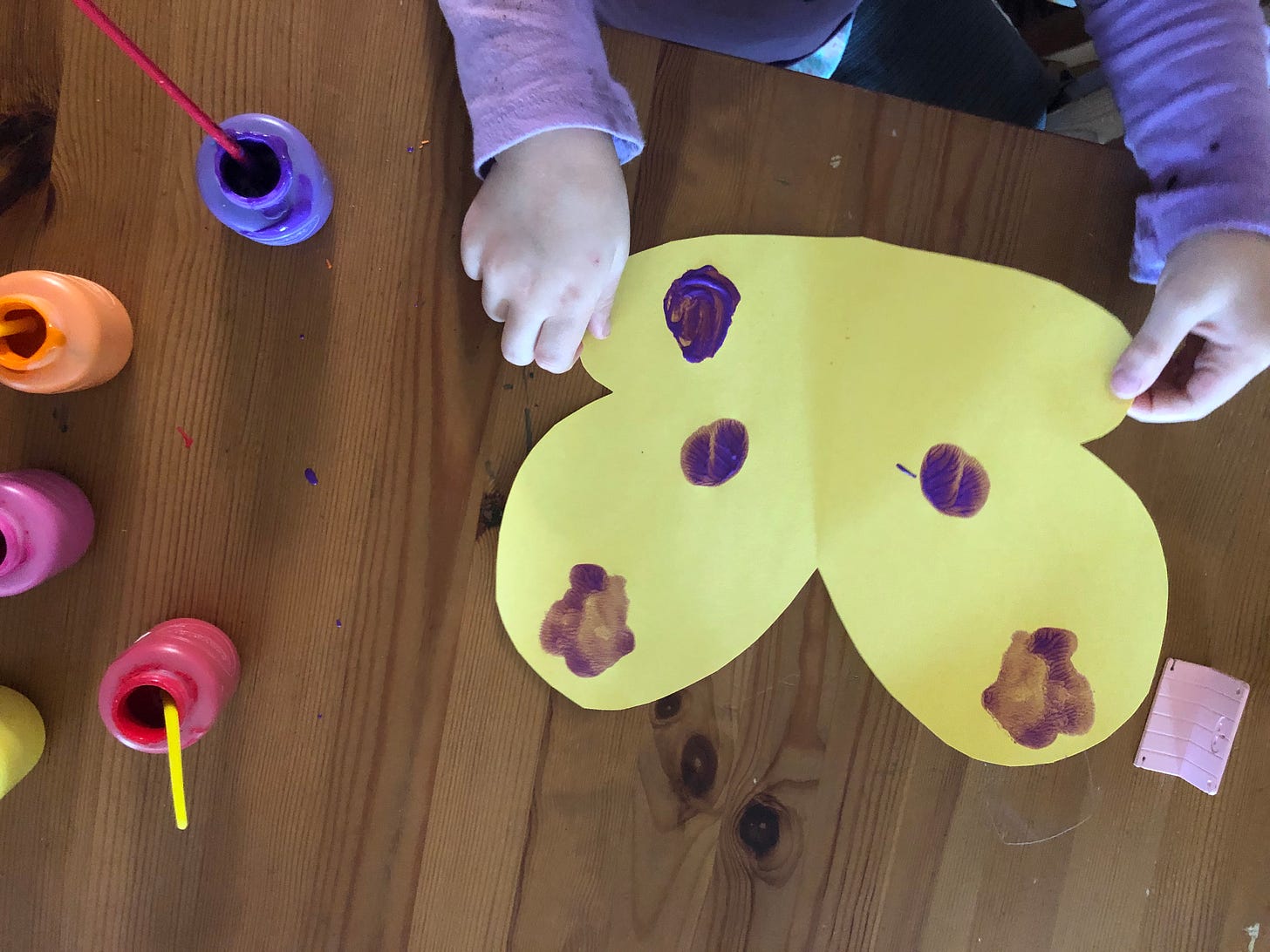
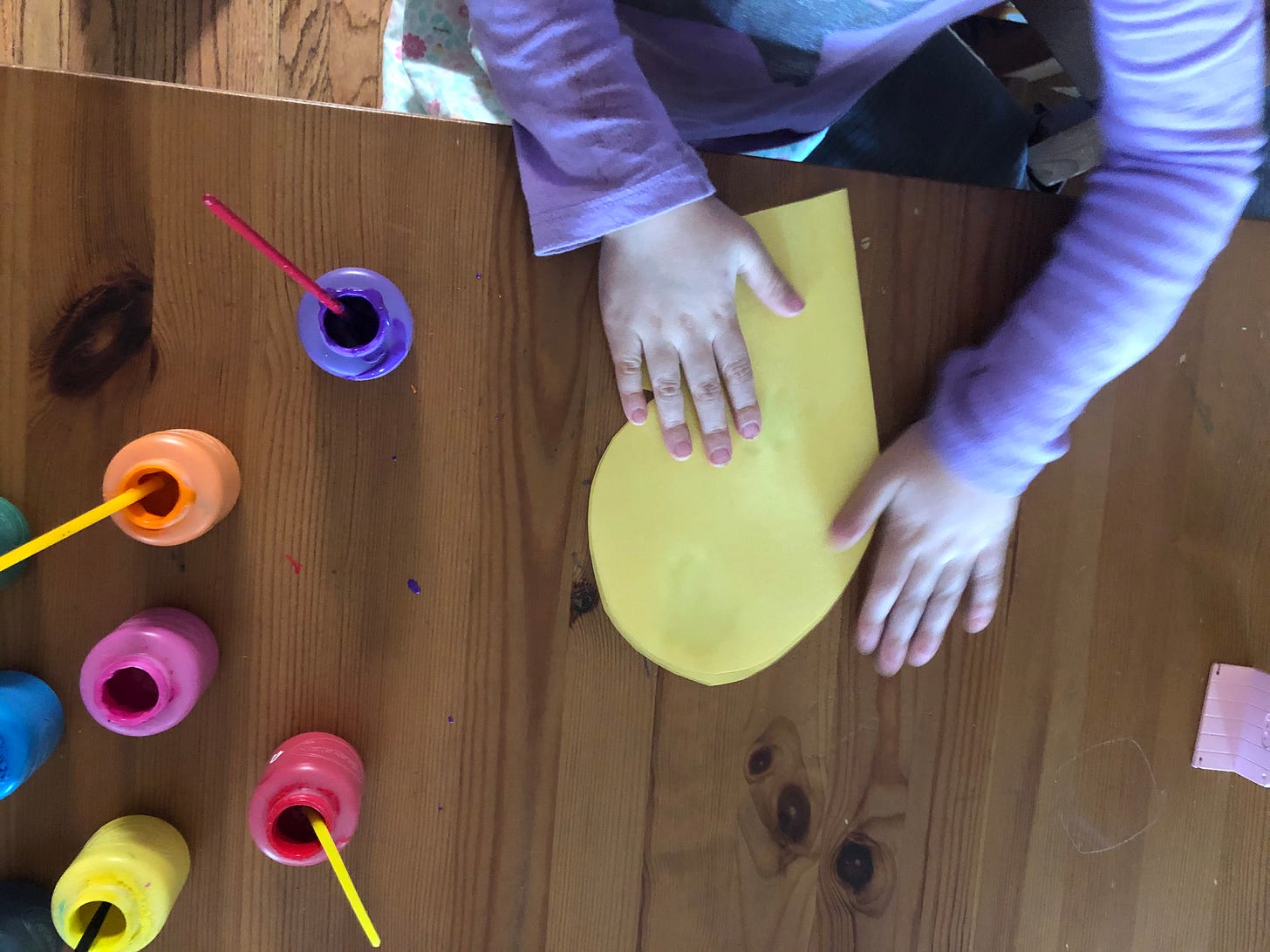

You can always try this with other shapes as well. Taking the same principle, fold a paper in half, draw an image up to the folded line, cut along the line, unfold, and you’'ll have a symmetrical image. A heart is an easy one to do.
The Ants Go Marching: A Counting Book
After watching the movie, especially with that first scene with the ants marching to bring food to the grasshoppers, my older daughter started singing “The Ants Go Marching”. Do you know that song? The one that goes…
“The ants go marching one-by-one. Hurrah! Hurrah!
The ants go marching one-by-one. Hurrah! Hurrah!
The ants go marching one-by-one.
The little one stops to suck his thumb
And they all go marching down, to the ground
To get out of the rain. Boom, boom, boom.”
And it goes on and on; two by two, three by three, etc. My daughter couldn’t remember the actual words, so she was making her own rhymes. I realized this would be a great opportunity to make a counting book! If you have counting books, they are a great resource. We have the book Goodnight Numbers by Danica McKeller (Also known as Winnie for The Wonder Years). It’s great!
I made a small book by cutting several pages in half and then folding them and stapling them together. I went ahead and wrote “The ants go marching ___ by ___” on the top of each page. Your child can also write this part instead. I decided to write this part so my daughter didn’t have to worry about the repetitiveness and could instead just focus on her rhymes. My 4 year old made up things for each ant to do. They didn't always rhyme, which is developmentally appropriate, but she drew a picture for each page.
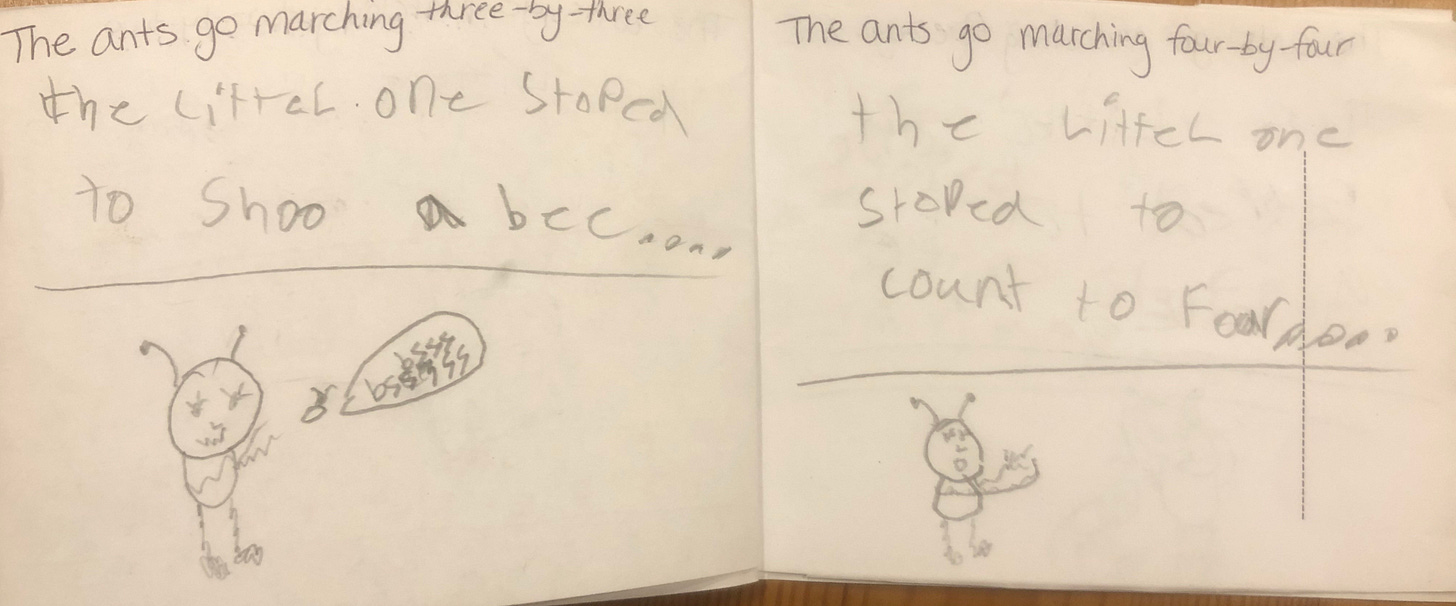
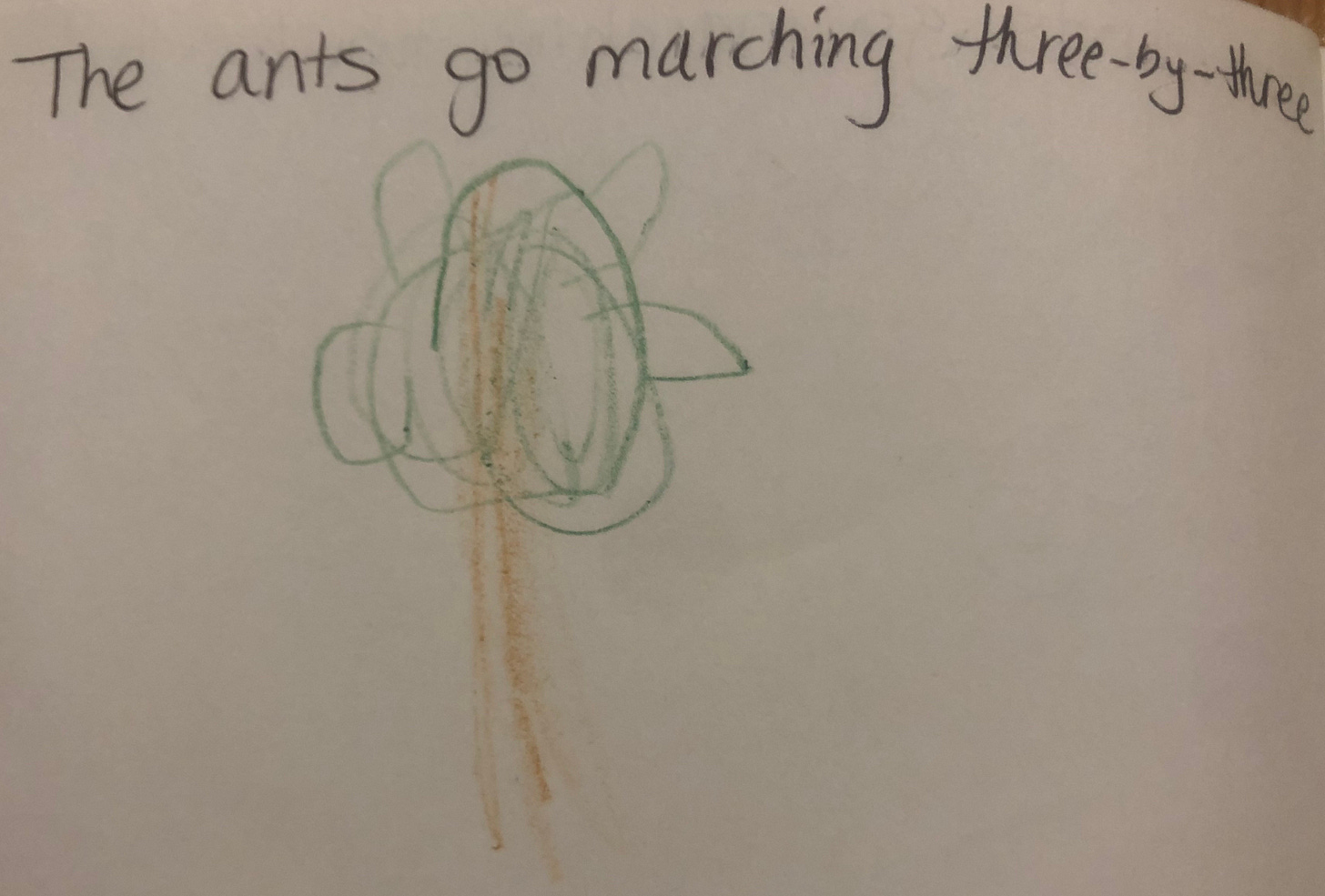
Aesop’s Fables: The Ant and the Grasshopper
Since this movie deals with ants and grasshoppers, this is a great opportunity talk about Aesop’s fable The Ant and the Grasshopper. Aesop lived in Ancient Greece and made up stories that always ended with a moral in which the reader learns a valuable lesson. In The Ant and the Grasshopper, the ants work hard to put food away for winter while the grasshopper plays. When winter comes, the ants are prepared, but the grasshopper is hungry with no food to eat! You can watch a version of this story here from ABC Mouse. If your children enjoy this fable, you can explore other fables by Aesop like The Lion and the Mouse, The Crow and the Pitcher, and the very famous Tortoise and the Hare. (Moral: Slow and steady wins the race!) Remember to always watch Youtube along with your child.
If you have older children looking for a writing challenge, they can make up their very own fable with a lesson to be learned!
Rock Painting
In our neighborhood there is a trend to paint rocks and leave them around the neighborhood for people to notice. My daughters wanted to join in. We decided to paint insects on them to leave around the neighborhood as part of nature. We made an ant and a ladybug. We had a fun rock painting kit that a friend gave us for my daughter’s birthday, however you can just find rocks in your yard or neighborhood and use paint that you have on hand. Watercolor won’t work great because it will wash off, however if you have finger paint or acrylic paint, that should work fine!
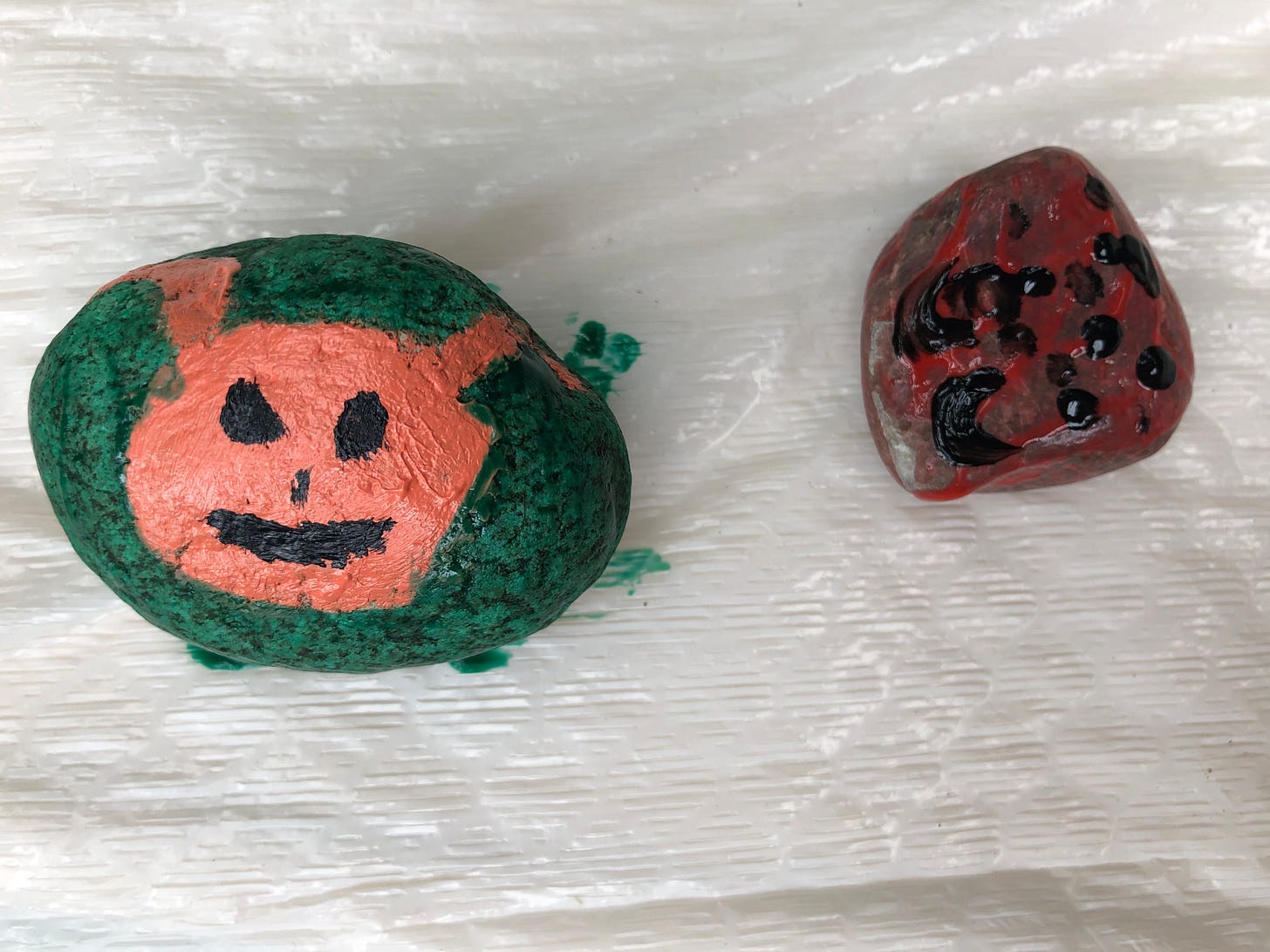
Bug Repeated Addition and Multiplication
Here is a fun math activity! I took a piece of paper, folded it in half, then folded it in half again. Then I asked my daughter to pick a bug and draw it a few times- she gets to choose. After drawing the bugs, we looked at the amount of legs. Each insect has six legs. If there are three bugs, then you count them up: 6 + 6 + 6 = 18. Explain to your child that this is the same as 6, three times. So 6 x 3 = 18. Then you can do the same thing with wings! If there are 4 bees, your child would draw 4 bees. Because they have 2 wings each, the math problem would be 2 + 2 + 2 + 2 = 8. This is the same as 2 x 4 = 8. It’s a great visual way to show the relationship between addition and multiplication.

Online Resources from National Geographic Kids, PBS, and The Smithsonian
While doing these activities, you can zone in on a particular insect that your children may be interested in. For mine, it was ants. It wasn’t because they particularly like ants, however we’ve had an ant problem in our house for a while! It all started a year and a half ago when we moved into this house. When spring came, so did that ants! Now that we’ve been here a while, we have the ant control thing down, but this was a great opportunity to look at ants in a different way— more than just as pests. Did you know that all the worker ants that you see are actually female? Did you know that ants are omnivores? These are things that we had learned in our ant research. Here is a link to a video we watched about ants from National Geographic. The scientists in the video use cameras to enlarge the ants so that these teeny-tiny things look larger and are seen in great detail. I have to admit that this frightened my 7 year old. She didn’t end up watching the whole video because she thought the ants looked scary. My 4 year old, on the other hand, loved the video and thought it was all fascinating. Note: Since this is a longer video, it does have embedded ads. Make sure to watch Youtube with your kiddos as you never know what ads may be shown or what videos may autoload afterward.
My girls are also fascinated by butterflies. We found another great National Geographic resource here that describes the life cycle of a butterfly and also has links to amazing facts about other insects.
We found this website: 25 Cool Things About Bugs. There are actually only 24 because, as we found, one of the facts is listed twice. Can you spot which one it is?
My choice to watch A Bug’s Life this week all stemmed from my daughter’s original question, “Are all ladybugs girls or are there boy ladybugs?” We found the answer to that question here. I was surprised to find out that ladybugs are synonymous with ladybirds. I learned something new this week, too! If you are looking for a fun baking activity this week, try making these ladybug cookies!
Finally, we took a look at bees. If your children are anything like mine, they may be a little afraid of bees. Every time my kids see a bee outside, they FREAK OUT. By taking a look at bees, I thought it would help them seem less scary. One of the facts we talked about is that, in order to communicate with each other, bees do a “waggle dance”. My kids thought this was really cool. Here is a short video from The Smithsonian on the bees’ waggle dance.
And here is another video from PBS (their It’s Okay To Be Smart series) on how bees make honey. Note: It does say that the bees drink nectar and then vomit it back out to make honey. So if you think that will gross your kids out, you could skip this one. It all depends on your child’s temperament. Some will think it’s awesome. Others will stop eating honey. Since my seven year old is in the second category, we skipped this video. My four year old would’ve thought it was awesome.
Note: All of these videos do not need to be watched at the same time. You can watch them over the course of days, if you’d like, or show them when they show interest in a particular insect.
Bug Facts: Did You Know?
After tapping into some of the above resources, your children can write some facts that they learned that are interesting to them. You can make it more fun by making it a “Did You Know” list or a “Top 5” or “Top 10” list. You can even make it into a poster- whatever makes it exciting for your child. If your child is really into drawing, have him or her draw a picture of an insect and write one fact to go with it. My daughter chose to make a Top 5 list.
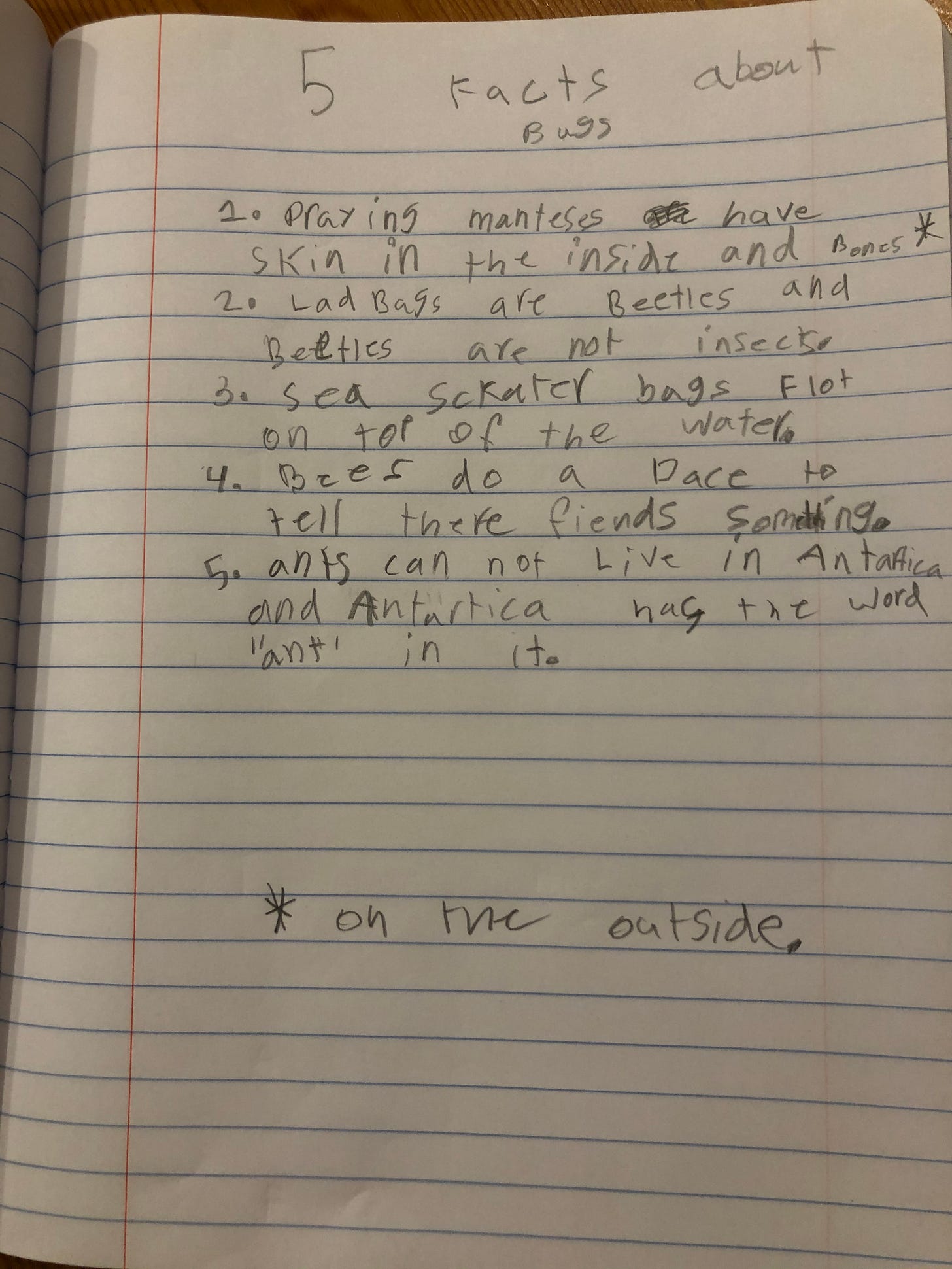
Circus Play and Making Your OwnProgram
In A Bug’s Life a group of bugs chosen to save the day are actually a bunch of circus bugs. I encouraged my daughters to create their own circus show and create a program to go with it. First my daughters came up with their circus acts (a magic show, juggling, dancing, and a gymnastics display). I then showed them examples of programs that we had from events we had attended. One was my daughters’ own dance recital program, another was a program from a community ballet we had attended. We looked at how the program had a title, some information about the program, a biography about the people in the show, and some advertisements. So my older one made a program. She started out with just a couple of pages and then kept adding and adding. By the time she was done, it was 12 pages long! She had a good time coming up with pretend advertisements. She had so much fun, she made a second one! My daughters had even more fun putting on the circus. Your children can even make signs, banners, and tickets!
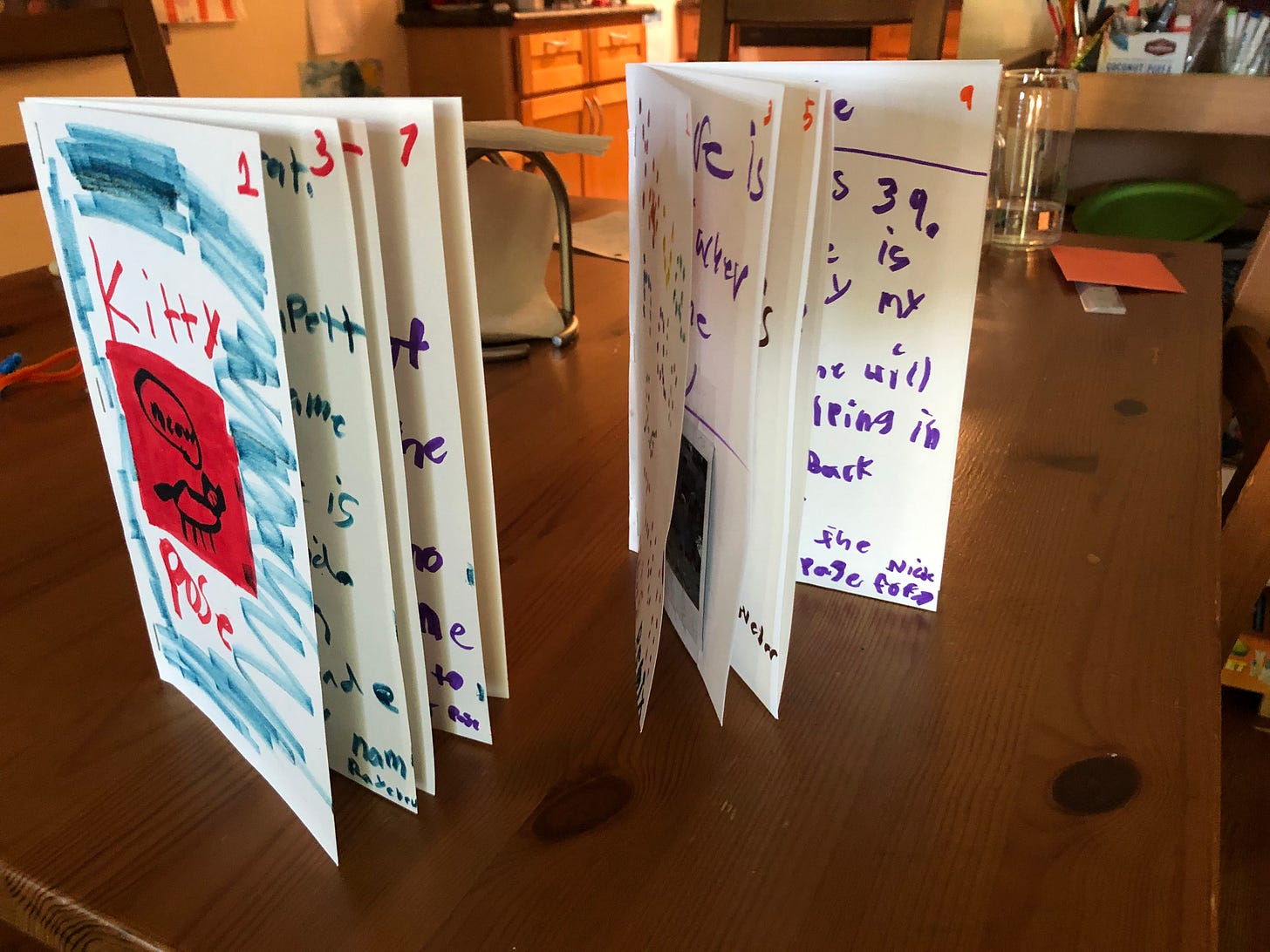
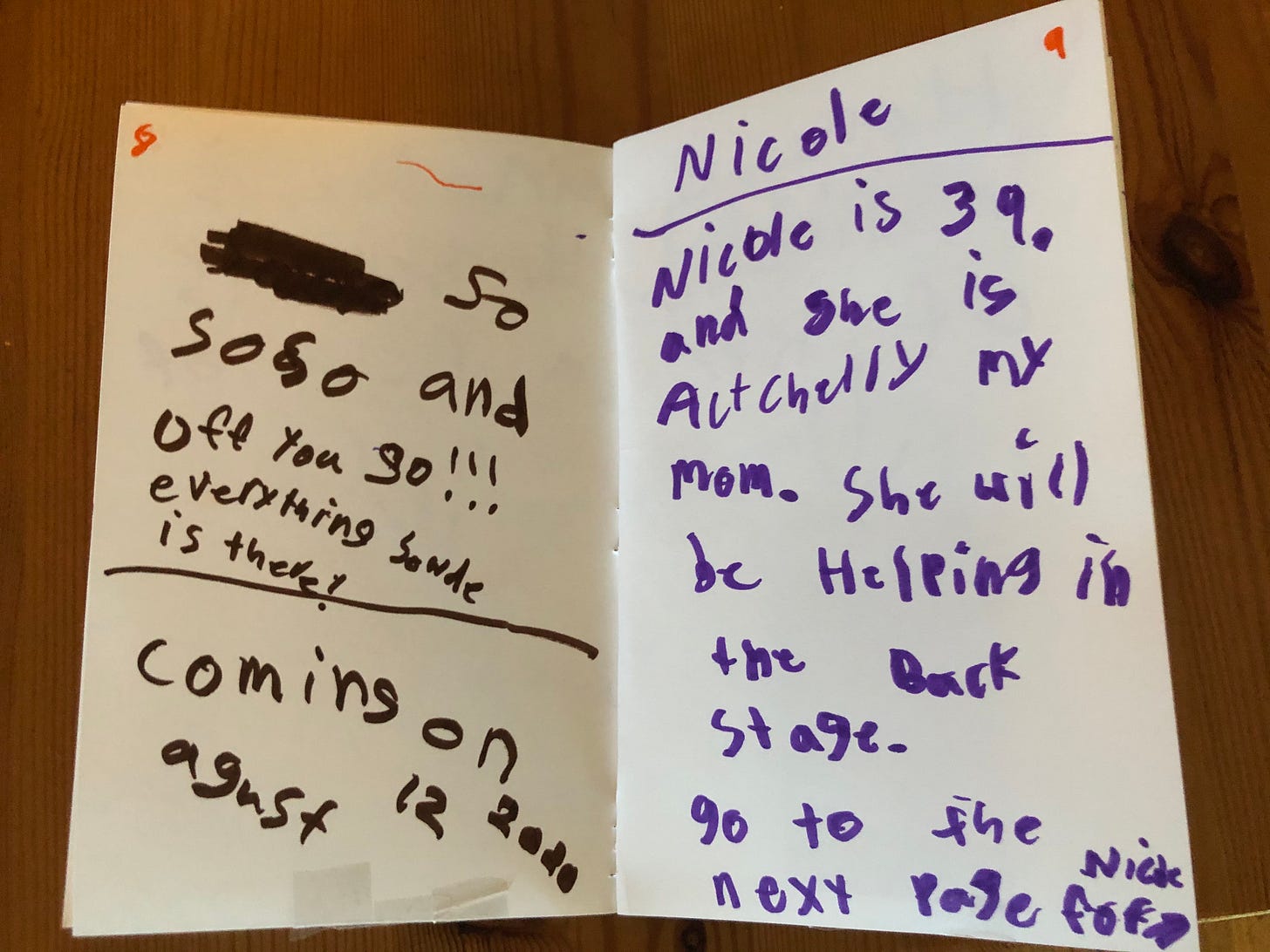
If your child is older and needs more of a challenge, you can encourage writing a play script! Children can come up with an idea and then write the play, including dialogue. It can even include stage directions, which would be put in parenthesis. So, as an example:
Harry: (yells) Where are you going?
Kathy: (points to stage left) Over there! Do you want to come with me?
Special note: When teaching children stage directions, stage left and stage right are from the perspective of the actor on stage, not the audience.
Once the script is written, have your children rehearse and then perform the play. They can even make sets and costumes!
Read aloud- James and the Giant Peach by Roald Dahl
I love this book! I used to read it to my second graders each year and they loved it! If you don't have the book, it is available on Audible. It features several insects as main characters. It’s a fun way to keep children’s interest in insects going. We are reading it now and the kids are really enjoying it!
Well, that’s it for this weeks’ learning experience! My older daughter starts school this week (school starts so early here in California!) and we are starting out virtual. I’m not quite sure what that’s going to look like, so I’m going to be taking a little break from these Disney+ Learning Experience posts to focus on her learning as we figure out what virtual learning looks like in a pandemic. However, that doesn’t mean I’m done posting! I plan to post other activities as we continue virtual learning and I hope to post another Disney+ Learning Experience in the not-so-distant future.
Thanks for reading!
~Nicole
